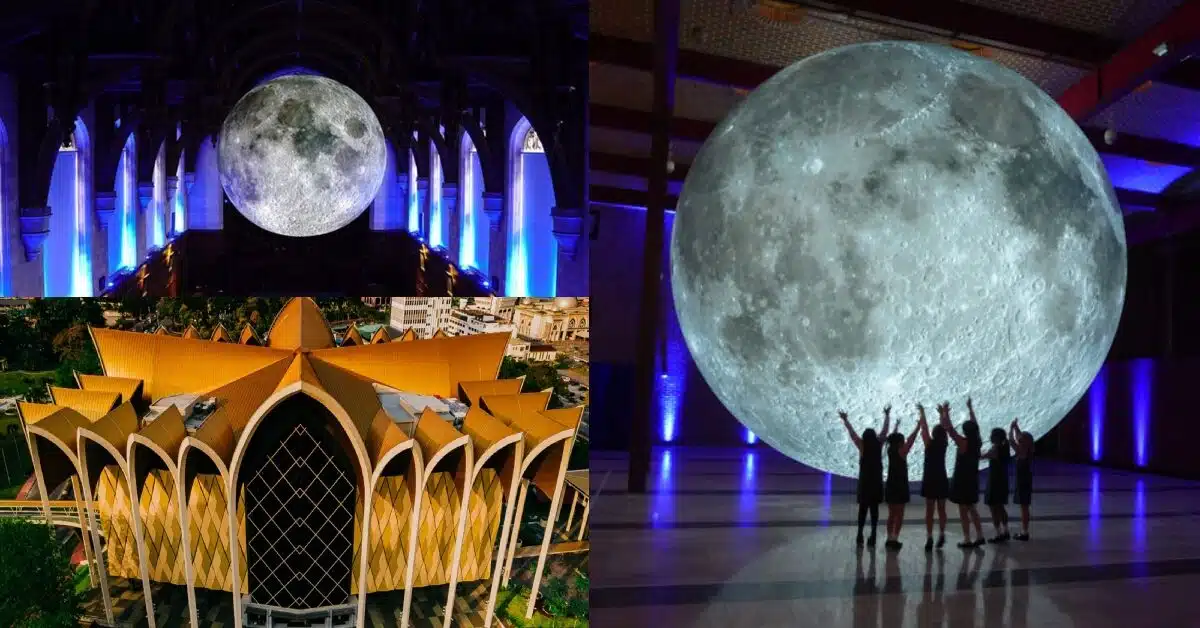Journey Via Time at Borneo Cultures Museum
Journey Via Time at Borneo Cultures Museum
Blog Article
Look Into the Interesting Globe of Borneo's Cultural Heritage: A Comprehensive Guide to the Cultures Museum Experience
Immersing oneself in the complex tapestry of Borneo's social heritage is similar to starting a voyage with time and tradition. The fusion of indigenous tribes, standard handicrafts, exciting performances, and historic narratives housed within the boundaries of the island's galleries supplies a peek right into a globe including extensive heritages and lively customs. As site visitors go across through these repositories of culture, they are bid to check out a world where past and present intermingle, welcoming contemplation on the strength and splendor of Borneo's diverse heritage.
Native People of Borneo
Borneo is home to over 50 aboriginal tribes, each with special social techniques and customs that have actually been protected for generations. Among these tribes are the Iban, known for their traditional longhouses and elaborate tattoos where several family members live.
These indigenous tribes play an essential duty in keeping Borneo's abundant social tapestry. Regardless of external impacts and innovation, many tribes remain to maintain their languages, beliefs, and custom-mades. Visitors to Borneo have the possibility to involve themselves in the special way of livings of these tribes through cultural excursions, homestays, and community-based tourism efforts. By involving with these aboriginal areas, visitors can gain a deeper recognition for the diversity and strength of Borneo's aboriginal heritage.
Traditional Inventions and Artefacts

One noticeable instance of traditional handicrafts in Borneo is the production of woven products - Borneo Cultures Museum. Knowledgeable weavers use all-natural fibers like bamboo, rattan, and pandan leaves to develop intricate baskets, floor coverings, and accessories embellished with vibrant patterns that hold symbolic definitions within the community
The art of woodcarving is one more substantial element of Borneo's typical handicrafts. Artisans carve detailed designs right into numerous kinds of timber to generate masks, sculptures, and music instruments that not only offer useful objectives yet likewise hold social importance, often portraying mythology or spiritual beliefs.
Furthermore, Borneo is renowned for its beadwork, with craftsmens meticulously crafting grains from materials like glass, seeds, and shells to create fashion jewelry, clothing decorations, and attractive things that display the area's vivid visual practices. These typical handicrafts and artifacts not only work as concrete expressions of Borneo's social heritage but likewise offer understandings into the communities' beliefs, worths, and lifestyle.

Cultural Performances and Festivals
With a deep-rooted connection to their cultural customs, the areas in Borneo come alive with dynamic cultural efficiencies and festivals that commemorate their heritage. These occasions showcase the abundant diversity of Borneo's ethnic teams, each offering one-of-a-kind dancings, music, and rituals that have been given via generations. One of one of the most renowned celebrations is the Gawai Dayak, celebrated by the Dayak people to note the rice harvesting period. During this celebration, standard songs fills the air, detailed dancings are done, and elaborate standard outfits are worn. One more substantial occasion is the Pesta Kaamatan, commemorated by the Kadazandusun community to offer thanks for the rice harvest. This festival includes social efficiencies, consisting of the Sumazau dancing, and conventional sporting activities like the bamboo dancing. Visitors to Borneo can immerse themselves in these celebrations, getting a deeper understanding of the region's social heritage and experiencing the warm hospitality of its individuals. Social performances and celebrations act as a lively pointer of Borneo's rich social tapestry and the relevance of preserving these customs for future generations.
Historic Stories and Artifacts
Exploring the historic stories and artifacts of Borneo provides a fascinating peek into the region's abundant past and cultural advancement. Borneo's historical tapestry is woven with varied impacts, showing the communications between aboriginal tribes, Chinese investors, European colonizers, and Malay sultanates. The artefacts discovered in Borneo showcase this elaborate background, varying from typical crafts like elaborate beadwork and woodcarvings to historical treasures such as ancient ceramic and tools.
Among one of the most compelling elements of Borneo's historical stories is the preservation of click to investigate dental practices gave through generations. These stories offer insights into the beliefs, customs, and lives of Borneo's inhabitants throughout the centuries. The artefacts unearthed from archaeological websites use substantial connections to these narratives, allowing visitors to witness the material culture of previous societies firsthand.
Contemporary Cultural Preservation Efforts

Additionally, curricula and this page social exchange tasks play a critical role in increasing understanding regarding the relevance of maintaining Borneo's special cultural heritage. By involving schools, galleries, and the larger area in conversations and tasks that celebrate Borneo's varied societies, conservation efforts can gain momentum and support for lasting sustainability. Cooperations between governmental bodies, non-profit organizations, and local neighborhoods are important in driving these conservation undertakings forward, making certain that Borneo's abundant social heritage remains lively and valued for generations to come.
Final Thought
In conclusion, the cultural heritage of Borneo is rich and diverse, with native people, conventional inventions, cultural performances, festivals, historical stories, and modern preservation efforts all contributing to its originality and significance. Visitors to Borneo's cultural galleries can obtain a much deeper understanding and recognition of the region's cultural heritage, permitting a much more immersive and enlightening experience.
Immersing oneself in the elaborate tapestry of Borneo's cultural heritage is comparable to getting started on a trip through time and custom.With an ingrained connection to their cultural practices, the communities in Borneo come to life via lively cultural efficiencies and events that celebrate their heritage. Cultural efficiencies and festivals serve as a lively reminder of Borneo's abundant social tapestry and the significance navigate here of preserving these customs for future generations.
In addition, instructional programs and social exchange activities play an important function in increasing understanding about the value of preserving Borneo's distinct social heritage. Collaborations in between governmental bodies, non-profit organizations, and neighborhood areas are vital in driving these preservation ventures onward, ensuring that Borneo's rich cultural heritage stays lively and cherished for generations to come.
Report this page